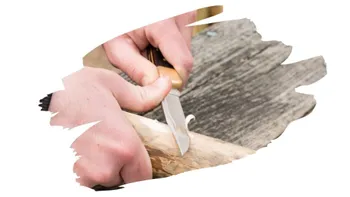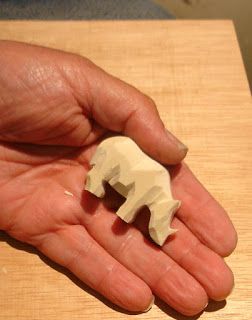
Before carving a chain, it is crucial to know where to look and which species of wood to use. You can also use different patterns and variations. Listed below are some helpful tips to help you get started. Once you have learned how to carve a necklace, it is time to start making your own. These steps will help you create a unique chain. The results will please you! Make sure you keep your chain as a keepsake after carving it!
Techniques
A chain can be used to decorate or as a gift wrap. Choose a long square-shaped piece wood for your first carving project. Basswood is recommended for beginners, but you can also use pine wood if you are a more experienced carver. Pine wood is more straightforward to work with but will frustrate you until your become more comfortable with it.
A woodcarving mag can be a valuable resource for learning about the art. Each article is written in step-by–step instructions and each one is written by an acknowledged author. These articles, written by renowned authors, will help you navigate every step of the carving process from designing your design to finalizing it. Woodcarving is a popular hobby among children. These guides are great for woodcarvers starting out, no matter if it is their first project or their first one.
Wood species
When carving a chain, there are many species of wood to choose from. Some species are easier to carve than others. Hardwoods are a good choice if you're looking for an intricate design. These species are also easily available in large quantities. They are less likely than other wood types to burn or char. Before carving, make sure to check the Janka hardness rating for each type of wood. This information can be found on Wikipedia or Bell Forest Products.
Using a sharp jack knife or wood carving knife, you'll carve a chain from wood. The result will be a cross-shaped rather than a rectangular one. Although it's possible to create any shape you want, the most effective wood chain is one with a single shape. A chain can have any number of different shapes, but it's best to stick to one to start. It is also important that the wood is free from mud, bark, and other substances that can cause the chain's to crack.
Patterns

There are several different styles of wood carving and chain work is one of the more fun woodworking tricks you can do. The sample to the right shows a one-piece woodcarving with a shackle. It also includes a four-foot long chain and 4" diameter balls. A grid pattern determines the shape and size of each link in a chain pattern. A scrollsaw is required to create a chain from a grid.
Hollowing out the inner links of the chain links is the first step to carving a chain design. You can achieve the exact shape you want by doing this. Once you have the basic shape you can refine the shape of your chain links and create individual profiles. You can make chain patterns in any shape you like, including square or circular. The round profile is the best for beginners. But if you're looking for a unique and beautiful chain design that is both functional and decorative, an octagon can be carved or a single diamond.
Variations
There are many ways to carve a chain. One option is to carve the profile of each link differently. The inside of the links can be carved to make your chain either square or cross-shaped. Beginners may prefer to stick with one shape when carving their chain. You can expand your chain carving abilities by trying other shapes. Here are some more common options.

To carve a chains, you can use a knife or a strong-nosed chisel. It is the same process as carving ornamental wooden vessels. The long bar is then cut into links, spiders, or ring handles. This type is tedious and requires patience. A mistake can endanger the chain. Also, you should choose a manager who is suitable for the job depending on how the chain will be used.
FAQ
How long does it take you to finish a piece?
It depends on the size of the piece of furniture. A smaller project like picture frames or boxes can be completed in a single day. Larger projects such as tables and desks can take several days to complete. It takes time in order to properly stain or seal the wood.
Can you teach yourself woodworking?
Doing is the best way to learn any subject. Woodworking requires patience, practice and skill. Every craft takes practice and patience.
Learning how to do something is best done by doing it. Start small and then build upon what you've learned.
Where do I get my woodworking supplies?
There are plenty of places where you can find everything you need to start out. You could also visit hardware stores in your area or shop online at Amazon.com.
For furniture and other materials that you can reuse, check out flea markets and garage sales.
This is a job that I can make a living from.
Yes! Many woodworkers have this ability. According to the U.S. Bureau of Labor Statistics' (BLS), in May 2012 the median annual wage of woodworkers was $34,000 That's higher than the national average of $31,000 per year.
How much money do you need to get going?
Since every project differs, it is impossible to give exact numbers. These factors will help you get an estimate of how much money is needed.
-
Material costs
-
Tools and equipment
-
Time spent working on the project
-
Hourly rate
-
What is your expectation for profit?
-
Hire help
If you're just starting out, you may decide to start small by making simple items such as boxes and picture frames. You will gain more experience and be able to tackle larger projects.
Which wooden products are most popular?
The best-selling wooden items are those which have been made from wood that was harvested sustainably.
The most popular types of wood for furniture include oak, maple, cherry, mahogany, walnut, and teak.
These woods have beautiful grain patterns and colors. They are also very strong. They will last for many years, if taken care of properly.
To prevent moisture damage to wood furniture, it is important that it be painted before any other surfaces. This includes all surfaces, including drawers, doors, and handles.
A paint that resists water is the best choice to ensure that furniture lasts a long time.
It is recommended to use an oil-based primer, then apply two coats. You may need to apply several coats of top coat depending on how much wear it is expected.
You should avoid using aerosol paints or spray cans. These products contain solvents that evaporate quickly and leave behind harmful fumes.
What would you recommend as a starting material for woodworking?
Start with softwood like pine, poplar and ash. These two are the easiest to master, then you can transition to hardwood.
Statistics
- Most woodworkers agree that lumber moisture needs to be under 10% for building furniture. (woodandshop.com)
- Woodworkers on the lower end of that spectrum, the bottom 10% to be exact, make roughly $24,000 a year, while the top 10% makes $108,000. (zippia.com)
- If your lumber isn't as dry as you would like when you purchase it (over 22% in Glen Huey's opinion…probably over 10-15% in my opinion), then it's a good idea to let it acclimate to your workshop for a couple of weeks. (woodandshop.com)
- The U.S. Bureau of Labor Statistics (BLS) estimates that the number of jobs for woodworkers will decline by 4% between 2019 and 2029. (indeed.com)
External Links
How To
How to stain wooden surfaces
Stain wood is a process that involves applying chemicals to the surface of wood, which changes its color. This chemical reaction changes the wood's color from white to brownish. While oak is the most widely used type of wood for staining purposes, other types of wood are also available.
There are many options for applying stains to wood surfaces. You can mix the stain with a solvent, such as turpentine, and spray it onto the wood. Other methods use a solution of water and dye applied directly to the wood. The stain can be mixed with paints and varnishes to become part of the final coating.
Preparing the wood surface is the first step to staining it. You must clean the wood well to remove any grease or dirt that might interfere with the application of the stain. Sanding the wood smooths out rough spots and scratches. You must then decide on the type of stain that you wish to use. There are two main types of stain: non-penetrating and penetrating. Penetrating stains penetrate deeper into the wood than non-penetrating ones, making them ideal for dark colors such as mahogany. Non-penetrating stains work best with light colors like maple.
After deciding on the type of stain, you want to apply, prepare your tools. The best tool for applying stains is a paintbrush. It allows you to evenly distribute the liquid over the surface. You should also have some handy rags to wipe up excess stains after you finish painting. If you plan to mix the stain yourself, make sure you have enough containers available to hold the different components of the mixture.
Once you have prepared your materials, start by cleaning the area where you plan to stain the wood. Use soap and warm water to remove dust and grime. You can wipe down the entire furniture using a damp rag with clean water. If you intend to stain darker wood, make sure you get rid of any debris.
The stain should be applied next. Next, apply the stain to the furniture by starting at one end. Slowly and carefully move along the grain of wood, slowly but steadily, until you reach the other end. The stain should not drip off of the wood's edge. Before moving on to the next steps, allow the stain drying completely.
Apply a clear polyurethane sealant to protect the painted surface. Apply three coats of polyurethane sealer. Allow the third coat, which should dry overnight, to dry before sanding.